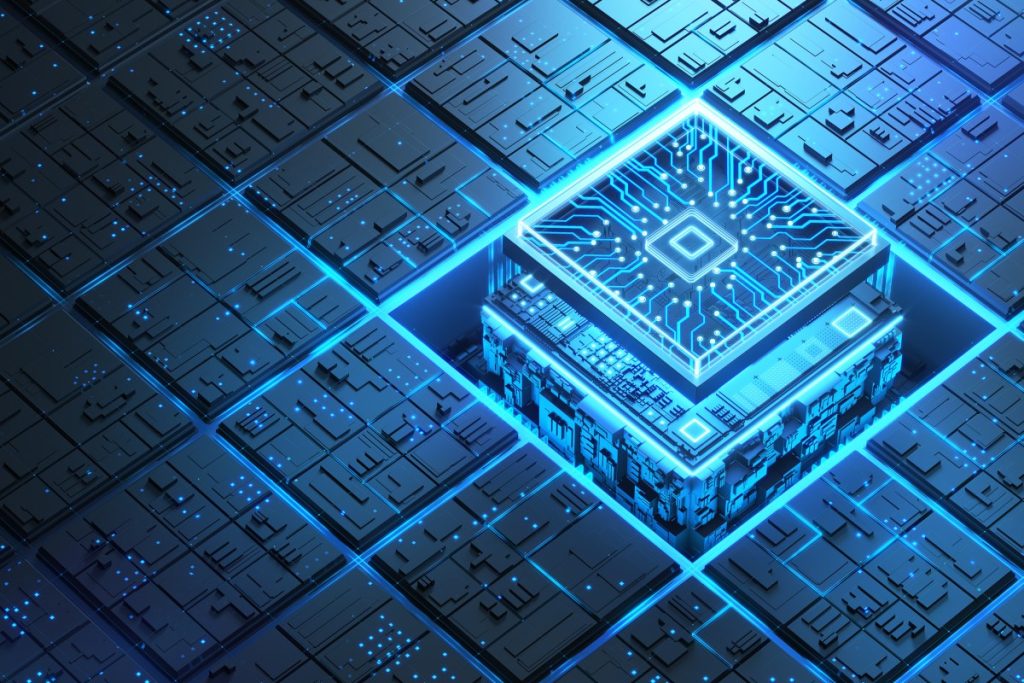It has already been a tumultuous year for the US semiconductor industry.
The semiconductors industry plays a considerable role in the “race to the” that the United States seem determined to win, which is why this context is worth paying attention: from the appointment of Intel of tanning for the lips-that has not lost time to work trying to revitalize the Legacy-Al Coo company, to Joe Biden who proposed to sweep the new rules of export of chips to his way in which he cannot be attached.
Here is a look at what has happened since the beginning of the year.
May
A last minute reversal
May 7th: Just a week before the “framework for the spread of artificial intelligence” was destined to implement, the Trump administration plans to take a different path. According to several media, including Axios and Bloomberg, the administration will not enforce the restrictions when they should start on May 15 and is instead working on their framework.
April
Anthropic doubles the support of the export restrictions of chips
April 30: Anthropic has doubled its support to limit the exports of US manufacturing chips, including some changes to the framework for the spread of artificial intelligence, such as imposing further restrictions on level 2 countries and dedicating resources to execution. A spokesman from Nvidia has brought back, saying: “American companies should focus on innovation and face the challenge, rather than telling high stories that large, heavy and sensitive electronics are in some way marked in” blows “or” together with live lobster “.
Layoffs planned on Intel
April 22: Before his calling for earnings of the first quarter, Intel said he was planning to fire more than 21,000 employees. The layoffs were intended to simplify management, something that CEO Lip-bub tant has long said that Intel had to do and help to reconstruct the company’s engineering attention.
The Trump administration further limits chip exports
April 15: The chip at the Nvidia H20 was hit by an export license requirement, the company disclosed in a final deposit. The company has added that it provides $ 5.5 billion of charges relating to this new requirement in the first quarter of its tax year 2026. The H20 is the most advanced nvidia chip that can still export to China in some form or fashion. TSMC and INTEL have recorded the same week similar expenses.
Techcrunch event
Berkeley, ca.
|
June 5th
Book now
Nvidia seems to speak from further chip exports
April 9: The CEO of Nvidia, Jensen Huang, was noticed for dinner at the Mar-A-Lago Resort of Donald Trump, according to reports. At the time, NPR reported that Huang may have been able to save Chips at the Nvidia H20 from the export restrictions after accepting to invest in the United States in the United States
An alleged agreement between Intel and TSMC
April 3: Intel and TSMC would have reached a provisional agreement to launch a joint company. This joint venture would manage the structures for Intel and TSMC chipmaking would have a 20% participation in the new company. Both companies refused to comment or confirm. If this agreement does not materialize, this is probably a decent preview of potential agreements in this sector to come.
Intel runs non -core activities, announces a new initiative
April 1: CEO LIP-BU tAN worked immediately. A few weeks after he joined Intel, the company announced that he would make the non -core resources run so that he could concentrate. He also said that the company will launch new products including personalized semiconductors for customers.
March
Intel appoints a new CEO
March 12: Intel announced that the veteran of the sector and the former member of the Board of Directors, Lip-Fu would return to the company as CEO on March 18th. At the time of his appointment, Tan said that Intel would be a “society focused on engineering” under his leadership.
February
The Intel Ohio Chip plant is delayed again
February 28: Intel should have started managing his first chip manufacturing plant in Ohio this year. Instead, the company has slowed down the construction of the plant for the second time in February. Now, the semiconductor project of $ 28 billion will not conclude the construction until 2030 and may not even be open until 2031.
The senators ask for further restrictions exporting chips
February 3: The US senators, including Elizabeth Warren (D-Mass) and Josh Hawley (R-Mo), wrote a letter to the designated commercial secretary Howard Lutnick, exhorting the Trump administration to further limit the exports of AI chips. The letter referred specifically to the chips to the H20 of Nvidia, which were used in training the “reasoning” model of Deepseek.
January
Deepseek releases its model of “reasoning” open
January 27: Ai Deepseek’s Chinese startups caused a lot in Silicon Valley when he released the open version of his “R1’s” reasoning model. Although this is not news of semiconductor in particular, the transparent alarm in the industries Ai and semiconductors caused by the release of Deepseek continues to have chain effects on the chip industry.
Joe Biden’s executive order on chip exports
January 13: With only one week remaining in office, former president Joe Biden has proposed new large restrictions of export on chips to the manufacture in the United States. This order has created a three -level structure that has determined how many US chips can be exported to each country. On the basis of this proposal, level 1 countries have not had to face restrictions; Level 2 countries have had a first time purchase of chip limit; And level 3 countries have obtained further restrictions.
Dario Amodei of Anthropic weighs the restrictions of the chip export
January 6th: The co-founder and anthropic CEO Dario Amodei co-scored an editorial in the Wall Street Journal by supporting the existing checks of export of chips and indicating them as a reason why the Chinese AI market was behind the United States’. He also invited the president of Donald Trump to impose further restrictions and close the gaps that have allowed artificial intelligence companies in China to still get their hands on these chips.



